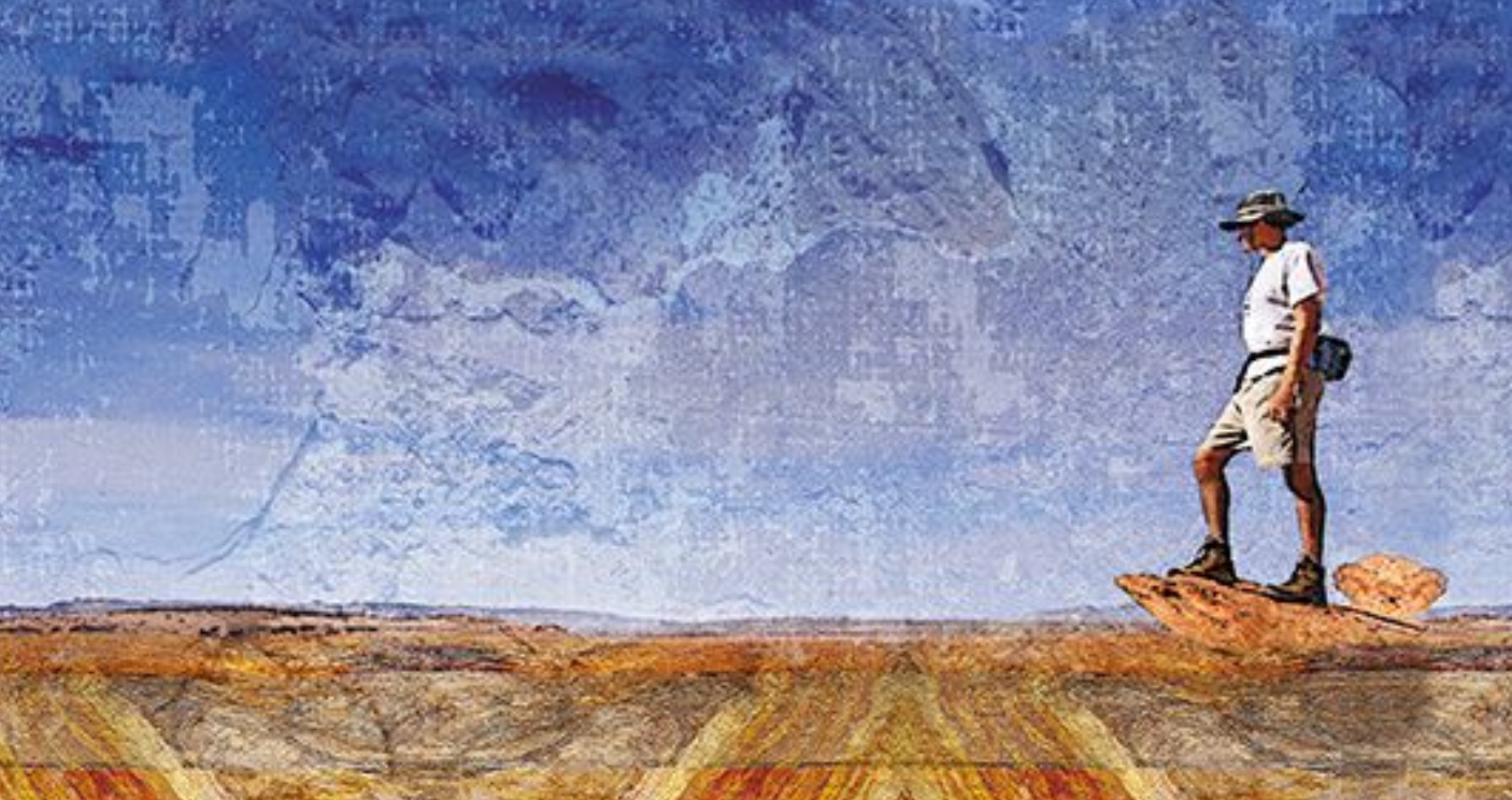Crawford Lake is so small it takes just 10 minutes to stroll all the way around its shore. But beneath its surface, this pond in southern Ontario in Canada hides something special that is attracting attention from scientists around the globe. They are in search of a distinctive marker buried deep in the mud — a signal designating the moment when humans achieved such power that they started irreversibly transforming the planet. The mud layers in this lake could be ground zero for the Anthropocene — a potential new epoch of geological time.
This lake is unusually deep for its size so its waters never fully mix, which leaves its bottom undisturbed by burrowing worms or currents. Layers of sediment accumulate like tree rings, creating an archive reaching back nearly 1,000 years. In high fidelity, it has captured evidence of the Iroquois people, who cultivated maize (corn) along the lake’s banks at least 750 years ago, and then of the European settlers, who began farming and chopping down trees more than five centuries later. Now, scientists are looking for much more recent, and significant, signs of upheaval tied to humans.
Core samples taken from the lake bottom “should translate into a razor-sharp signal”, says Francine McCarthy, a micropalaeontologist at nearby Brock University in St Catherines, Ontario, “and not one blurred by clams mushing it about.” McCarthy has been studying the lake since the 1980s, but she is looking at it now from a radical new perspective.
Crawford Lake is one of ten sites around the globe that researchers are studying as potential markers for the start of the Anthropocene, an as-yet-unofficial designation that is being considered for inclusion in the geological time scale. The Anthropocene Working Group (AWG), a committee of 34 researchers formed by the International Commission on Stratigraphy (ICS) in 2009, is leading the work, with the aim of crafting a proposal to formally recognize the Anthropocene. This new epoch would mark a clear departure from the Holocene, which started with the close of the last ice age. To define a new epoch, the researchers need to find a representative marker in the rock record that identifies the point at which human activity exploded to such a massive scale that it left an indelible signature on the globe.
Given how much people have done to the planet, there are many potential markers. “Scientifically, in terms of evidence, we’re spoiled for choice, but we have to pin it down,” says Jan Zalasiewicz, a palaeobiologist at the University of Leicester, UK, and chair of the AWG.
The committee’s current plan is to look to the legacy of the atomic age, when radioactive debris from mid-twentieth-century nuclear bomb blasts left a fingerprint of radioisotopes in the atmosphere, rocks, trees and even humans. “There’s a big bomb spike somewhere between 1952 and 1954 that is quite distinct and unmistakable,” says Zalasiewicz.
Once they pick their representative marker, researchers working with the AWG need to gather enough evidence from around the world to convince the governing bodies of geoscience that they have found a truly reliable signal for the start of the Anthropocene.
But some scientists argue that human activity has been shaping the planet for thousands of years, and that the working group has settled too quickly on the 1950s for the start of the proposed epoch. Erle Ellis, a geographer at the University of Maryland, Baltimore County, and an AWG member, has criticized the committee’s plans for designating the start of the Anthropocene. “The AWG decided the timing of the boundary before deciding on the marker, not the other way around,” says Ellis.
Hard evidence
In the end, it will be the rocks that have the final say. The decision on whether to officially designate the Anthropocene will come down to stratigraphic evidence preserved in the geological record — that is, whether humans have left a distinctive set of marks preserved in rock, seafloor mud or glacial ice that indicates a fundamental change in the planet.
After a decade of investigating this question, the AWG decided in May that humans had, in fact, left an indelible geological mark. In a binding vote in May, 29 of the 34 members opted to move forward with developing a proposal supporting the designation of the Anthropocene.
The AWG’s next task is to put forward a formal proposal identifying a global boundary stratotype section and point (GSSP), or ‘golden spike’ (see C. N. Waters et al. Earth Sci. Rev. 178, 379–429; 2018). A GSSP is a primary geological marker at one location that can be correlated with sites around the globe in diverse environments. The Anthropocene’s golden spike needs to demonstrate that there was a globally synchronous moment when physical, chemical and biological processes amounted to the irreversible crossing of a geological threshold from the Holocene to something altogether different.
In its recent vote, the AWG members decided overwhelmingly to pursue a GSSP in the mid-twentieth century. This time marks the start of the ‘Great Acceleration’, a vast transformation after the Second World War when the growing population began consuming resources and creating completely new materials at an exponential rate, eclipsing even the Industrial Revolution. All that activity poured unprecedented amounts of persistent organic pollutants into the environment, ramped up the rate of animal extinctions and created geological features that had never before existed.
These include 4-kilometre-deep gold mines and landfills more than 70 metres high, such as Teufelsberg in Berlin, where rubble from the Second World War was piled into an artificial hill. Although the AWG is still exploring several potential golden spikes, the radioactive record from the nuclear age has emerged as the front runner. “Radionuclides still look like the sharpest signal,” says Zalasiewicz. The AWG summed up its current work in The Anthropocene as a Geological Time Unit, published in February by Cambridge University Press.


